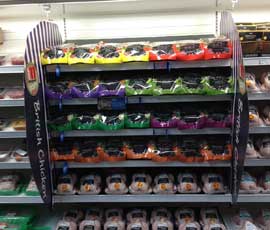Does roast-in-bag chicken chicken cut Campylobacter risks? A UK poultry business recently investigated by the Guardian for hygiene issues says it does.
Quoted in The Grocer, a Faccenda Foods official says by using their no-handle cook-directly-in-the-bag chicken consumers are safer.
“There is no need for consumers to handle food, which improves food safety at home and significantly reduces the risk from campylobacter,” said MD Andy Dawkins, who added the bag reduced the risk of cross-contamination from work surfaces or cutting boards.
In the week the FSA announced the first batch of quarterly results from its 12-month campylobacter survey, Faccenda said “unprecedented demand” had prompted it to ramp up development of roast-in-bag chicken. By the end of the year, it plans to expand the format – launched last September in Asda with seven flavoured whole chickens – into non-flavoured birds.
Responding to this week’s FSA results – which found campylobacter in 59% of fresh shop-bought chickens and on the outside of the packaging of 4% of birds – Dawkins said Faccenda would continue to invest to address the issue.
Campy on the outside of packaging could be problem for cross-contamination and I want to see some data for the claims that consumers handle these roast-in-bag products safer. Folks often don’t really know what people do with their products.







